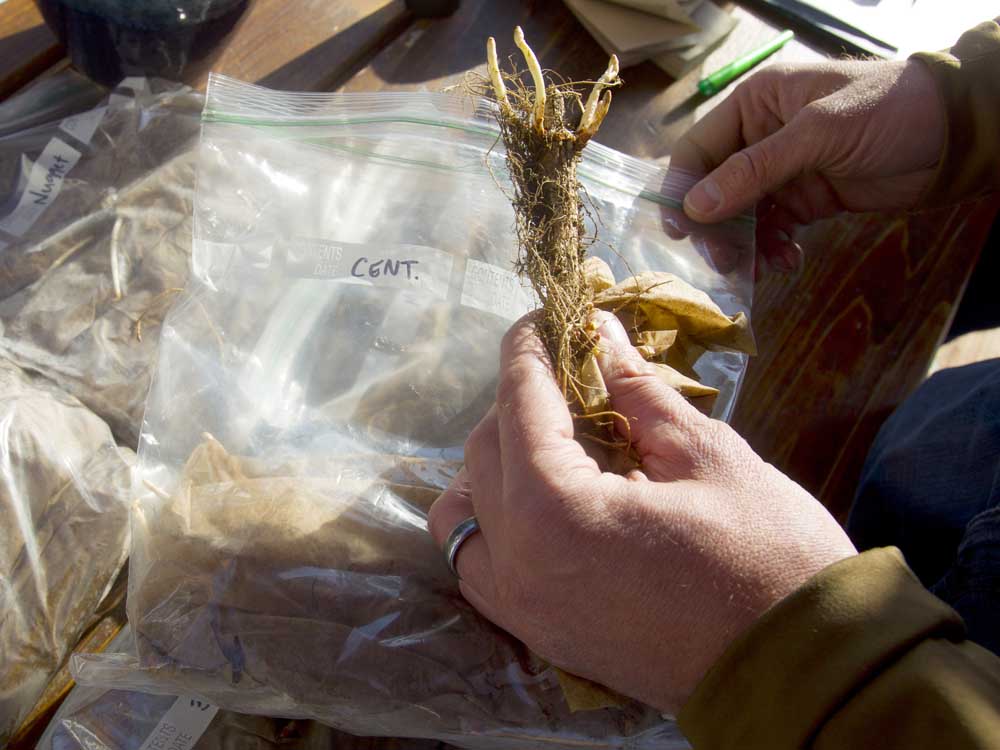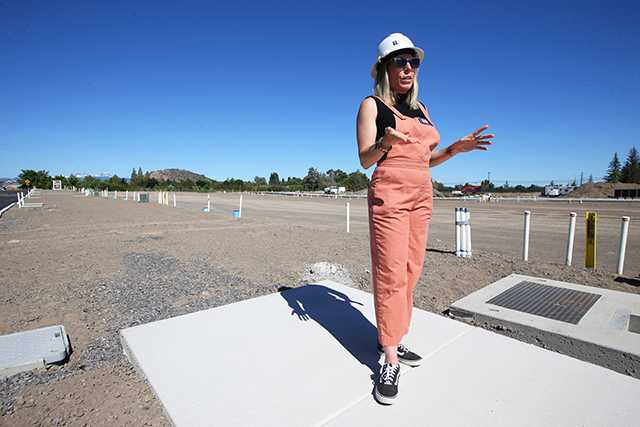You can grow hops, too!
Published 12:00 am Friday, April 10, 2015

- Andy Tullis / The BulletinBend volunteer Jake Polvi holds a hop rhizome during the launch party for Worthy Garden Club, at Worthy Brewing Co. in Bend on April 2.
Humulus lupulus — aka the common hop. Native to North America, this vine — or bine — bears the conical flower that we here in beer country treasure for the flavor and bitterness infusing our favorite microbrews.
Since the birth of Oregon, the state has been known for its hops. More specifically, the Willamette Valley has been known for its hops. But that is changing as more and more folks are realizing Central Oregon’s hoppy potential.
Trending
“I’m betting that very close to 100 percent of people think of Willamette when they think of Oregon hops,” says Miles Wilhelm, partner in the relatively new Smith Rock Hop Farm. “Central Oregon’s hop growing history is extremely sparse in detail and is just beginning to flourish.”
It may be a surprise that hops can prosper in Central Oregon. When Mary and Chris Louis, owners of Flying Pig Hops, moved to the Terrebonne area from the mountains between Reno and Lake Tahoe, they stumbled upon Tumalo Hops, perhaps the oldest hop farm in Central Oregon, owned by Gary and Susan Wyatt, and exclaimed, “We can grow hops here!” And so can you!
Kimberly Ann Brown of Bend’s Moonfire and Sun Garden Center says hops grow really well in ash, of which there is plenty in Central Oregon soil, and the dry climate protects against mold which can be an issue in the Willamette Valley.
Central Oregon’s 300-plus days of sun each year don’t hurt either. “Hops love sun,” says Mary Louis.
There are many hop varieties for the home-grower to choose from. Some of the hops that tend to do best in Central Oregon are Cascade, Chinook, Mt. Hood, Nugget, Yakima Gold, Centennial, Liberty, Willamette, Golden, Crystal and Magnum. But don’t limit yourself.
Louis says, “Zeus is going crazy right now.”
Trending
Lisa Kronwall, gardener at Worthy Brewing Co., which has its own hop garden, thinks Chinook and Centennial have been Worthy’s best performers.
At Moonfire and Sun, people tend to go for the Cascade variety, which is “like growing your own mascot,” says Brown, who adds that even German varieties can do well here.
So, when is the best time to start growing these babies? Brown says you can start getting rhizomes as early as February. Rhizomes are pieces of root cut from a mature female hop plant that can be planted to start a new hop plant. Rhizomes can be planted in containers in the colder months, then transplanted in the ground in June or once the threat of frost is gone.
Oregon State University’s hops breeder, Shaun Townsend, advises planting hops in well-drained soils with full sun exposure, and at least a 10-foot trellis or pole system is needed to support the bines. One or two plants should be plenty for the home grower.
After hops have had the summer to grow and develop flowers or cones, they will need to be harvested before the first frost in the fall. Brown says to harvest when the cones turn a little brown and when alpha acids are at their peak. Alpha acids are responsible for the bitterness in hops. Brown says you can smell it and there will be a resiny quality to the cones when felt.
Wilhelm says, “about the third week in August you’ll get a feel for the weather. Usually in the last week of August to the second week of September start feeling the cones.” He warns that if you harvest too early, there won’t be enough alpha acids, but if you harvest too late, the hops dry out.
After harvest, leave the remaining roots in the ground for the next year. Wilhelm suggests covering them with manure to protect them from frost.
In the first year or two, don’t expect to get too much from your hop plants. At this point the root system is still developing. You can still get a crop, but it’s not considered a full crop. The best is yet to come.
If you’re thinking of growing hops, “Just do it!” says Louis. “It’s as difficult as you want to make it.”
“You get what you put into them,” says Brown.
“Location, location, location,” Wilhelm says, adding that a south facing area that isn’t obstructed by shade will get your plants as much sun as possible, and the better your soil, the better your plants will do.
After the first season, when hops are established, you don’t have to do much to them. “They’re almost impossible to kill,” says Kronwall.
And remember, hops aren’t just used for making beer. Hops are great at providing shade and privacy.
To learn more about growing hops in Central Oregon and to get to know other hop-minded people, try attending one of Worthy Brewing Co.’s monthly Garden Club events. For more information, go to www.worthygardenclub.com/events or contact Lisa Kronwall at worthygardenclub@gmail.com.
— Reporter: 541-383-0350, kmccool@bendbulletin.com








